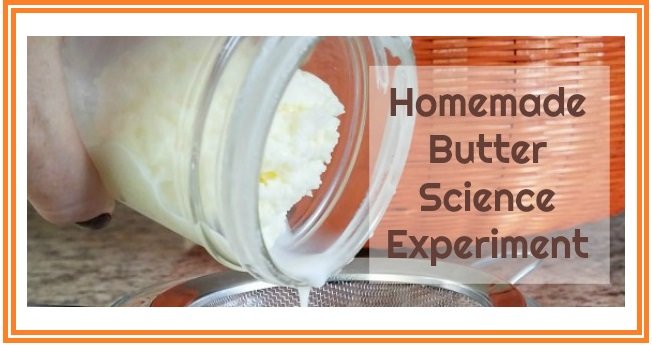Looking for an innovative experiment for little minds? It’s time to raid your kitchens and round up the kids – learn how to make your own butter and learn about the science behind the process. So many of the foods we eat are created through Chemistry, and butter is one of them. During this activity you can demonstrate how membranes and fat cells work together to create this delicious bread spread.
Science is everywhere, it’s in your home, it’s in your kitchen! For instance, each thing you cook and bake is in fact a chemical reaction, and eating and digestion requires biology. It's all one big ball of science!

Today I am going to guide you through the process of making homemade butter in a jar. You will need to collect the following ingredients from your cupboards:
- Heavy cream
- A pinch of salt for taste
- A glass jar with a lid
Yup, that’s it! The requirements for this experiment are extremely basic – I love it!
So, here’s what you do next:
- Fill your jar half way with cream.
- Add your pinch of salt.
- Seal the jar tightly with the lid.
- Flex those muscles and shake!
Shake, and shake some more! Slowly but surely the cream will start thickening, until it evolves in to a solid and buttery state. And there you have it, your very own butter!

If you doing this activity with students, or even with your own kids at home, hand out some crackers so that they can spread their product on and taste their own little bit of science!
The Science Bit
Butter is made from cream, cream in essence is milk with a very high fat content. When cream is heavily mixed or churned, the fats parts separate themselves from the liquids and mush together, forming a chunk of fat.
The question is:
What keeps the fat from sticking together all the time?
Small amounts of fat cells in cream and milk are held together by a tight membrane. Under normal conditions, these membranes keep fat cells from grouping together to form large globs. When the cream is agitated by the shaking of the jar, the fat cells bump against each other and the membranes burst. This frees the fat cells to clump together to form large globs and finally a large clump of butter. - http://www.123homeschool4me.com/2017/10/homemade-butter-science-experiment.html
This activity brings the wonderful world of science, chemistry and cooking together to make one big fun and informative learning experience. It’s a must do for kids of all ages and is sure to be a hit. Add some crackers, muffins or scones to the mix and the kids can finish iff their hard work feasting on their buttered treats!
thanks for you teaching my friend @sweetpea! i really gain a lot from it.
Thanks for sharing..
I let the kids help me name and with the cooking. Yesterday I Made cheese cookies ( typical dutch ) and they weigh and help out ist fun , mum and the kids Time and they learn from it so YES science is everywhere, ThAnx and have a lovely day
Science is very useful, because life science in the world to be better and easier. The research method you use is very useful for this life, and becomes a motivation
Very true :)
Thanks for sharing. I will make my own butter today.
Awesome!
Wow... Thanks @sweetpea. Now I can make my own butter.